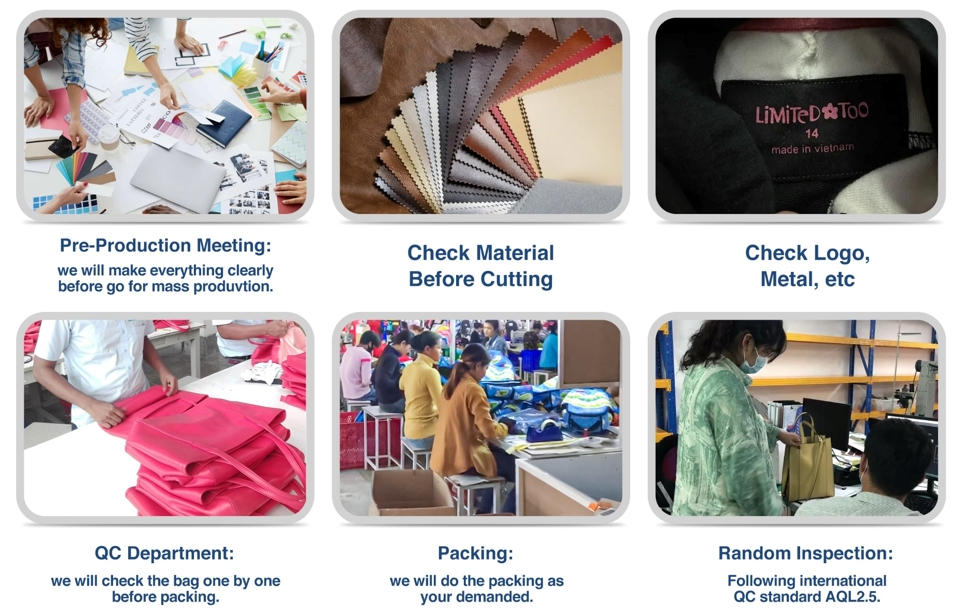Ensuring Your Manufacturer Meets Brand Standards
Time of publication: September 15th ,2024The process doesn't end with choosing a manufacturer. It's crucial to make sure that your chosen partner consistently meets your brand's standards. The quality of your products, the reputation of your brand, and ultimately, customer satisfaction all depend on this aspect. In this section, we'll explore how to establish and maintain these standards through quality assurance, factory audits, and building a long-term relationship with your manufacturer.
The Importance of Quality Assurance in Manufacturing
The backbone of maintaining your brand's reputation is quality assurance (QA). It's like a safety net that catches any potential issues before they reach your customers, making sure that every product lives up to your brand's promises. But how can you effectively implement QA with your manufacturer?
Setting Clear Expectations:The key to a successful QA process is clear communication. Right from the start, make sure you have detailed specifications for materials, construction methods, and finishing touches. These need to be written down and agreed upon by both parties. By giving comprehensive guidelines, you minimize the chances of mistakes and ensure that the manufacturer knows exactly what they need to do.
In-Process Quality Checks:The QA shouldn't just happen at the end of the production line. By implementing checks during the process, you can catch issues early on and minimize waste and rework. Getting regular updates from the manufacturer throughout production can help identify problems as they come up, instead of discovering them too late.
Final Product Inspection:Before any products are shipped to you, they should undergo a final inspection to ensure they meet all your specifications. This can be handled by your team, the manufacturer, or a third-party quality control service. A thorough final inspection helps to prevent defective products from reaching your customers.
Continuous Improvement:QA isn't just a one-time thing, it's an ongoing process. Make sure you regularly check the results of your QA and work with your manufacturer to find areas where things can be improved. This might mean tweaking processes, upgrading equipment, or giving workers some extra training. The goal is to create a culture where we're always striving for better quality.

For further insights on quality assurance practices, resources like American Society for Quality and Quality Digest offer comprehensive guides and tools.
Conducting Factory Audits: What to Look For
The audits of factories are super important to make sure that your manufacturer is sticking to your brand's standards—not just for quality, but also for working conditions, environmental practices, and overall operational integrity. Here's what you should focus on during an audit:
Operational Efficiency: Evaluate the efficiency of the factory's operations. Are there any bottlenecks or inefficiencies that could affect production timelines? Efficient operations not only ensure timely delivery but also help reduce costs associated with waste and rework.
Working Conditions: The conditions under which your products are made reflect directly on your brand. Ensure that the factory provides safe, clean, and fair working conditions. This includes checking for compliance with labor laws, fair wages, and the absence of forced or child labor. Audits should assess the physical conditions of the workspace, the safety measures in place, and the treatment of workers.
Environmental Practices: Sustainability is a key concern in modern manufacturing. During your audit, assess the factory’s environmental practices, including waste management, energy use, and water conservation. Look for certifications like ISO 14001, which indicate a commitment to minimizing environmental impact.
Compliance and Certifications: Ensure that the factory complies with all relevant local and international regulations. Certifications like ISO 9001 (Quality Management) and SA8000 (Social Accountability) are good indicators that the factory meets high standards in both production quality and ethical practices.
Transparency: A trustworthy manufacturer should be open and transparent during the audit process. If a factory is hesitant or refuses to allow a thorough inspection, this is a red flag. Transparency during audits is essential for building a strong, trusting partnership.
For a more detailed guide on conducting factory audits, you might want to explore resources like Sedex and Intertek.

Building a Long-Term Relationship with Your Manufacturer
Establishing a strong, long-term relationship with your manufacturer is one of the most effective ways to ensure that your brand standards are consistently met. This relationship goes beyond transactional exchanges and evolves into a partnership where both parties are invested in each other’s success.
Consistent Communication: Regular, open communication is key to maintaining a strong relationship. This includes not just discussing current orders but also sharing feedback, discussing potential challenges, and exploring opportunities for improvement. Building rapport with your manufacturer can lead to better collaboration and a greater willingness to go the extra mile.
Collaboration on Innovations: A long-term relationship can foster collaboration on new product designs and innovations. When a manufacturer understands your brand deeply, they are better equipped to suggest materials, processes, or designs that align with your vision and push your products to the next level.
Mutual Growth: As your brand grows, so too can your relationship with your manufacturer. This might involve scaling up production, exploring new product lines, or even expanding into new markets together. A manufacturer who is a true partner will be eager to grow alongside you, adapting to your evolving needs.
Performance Reviews: Regularly reviewing the performance of your manufacturer is essential to maintaining high standards. This can involve periodic audits, quality checks, and discussions on performance metrics. By setting benchmarks and reviewing them regularly, you can ensure that both parties are aligned in their goals and expectations.
For further reading on building strong supplier relationships, articles from Supply Chain Dive and Harvard Business Review provide valuable insights.
Ensuring that your manufacturer consistently meets your brand’s standards is not a one-time task but an ongoing process that requires diligence, clear communication, and mutual respect. By implementing rigorous quality assurance measures, conducting thorough factory audits, and fostering a strong partnership, you can maintain the high standards that your customers expect and that your brand deserves. This commitment to quality and integrity will not only protect your brand’s reputation but also pave the way for long-term success in the competitive fashion industry.

